
Fendi
Fendi’s history, from furrier’s shop in Rome to the luxury brand
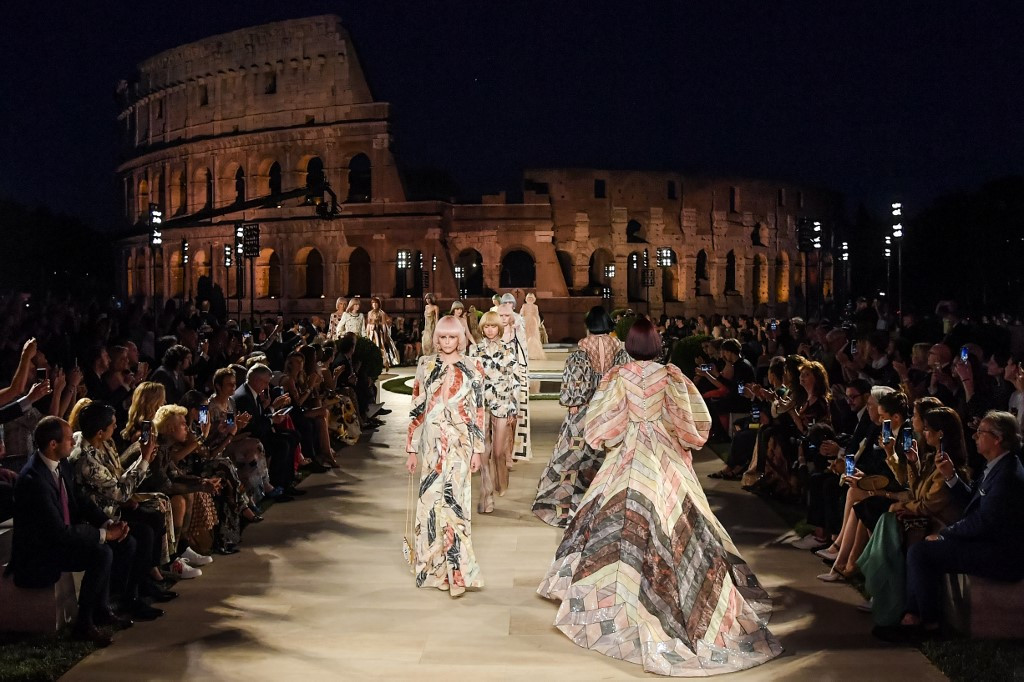
Index of Fendi’s evolution
- The origins of Fendi
- Karl Lagerfeld creative director
- The third generation
- Fendi and the cinema
- The baguette bag
- LVMH buys Fendi
- The success
- The Peekaboo bag
- Recent years
9.1 Innovations and collaborations - 50 years of collaboration with Lagerfeld
- The 90th anniversary
- The tribute to Karl Lagerfeld
- Current situation
13.1 Kim Jones’ direction
The origins of Fendi
The double F is one of the very first Made in Italy brands to become famous throughout the world. Fendi was born in 1925 in Rome: a small bag and furrier’s shop with adjoining laboratory, in via del Plebiscito. The founders Edoardo and Adele Fendi developed and strengthened their business in the thirties, opening a boutique in via Piave in 1932. The shop offered the complete range of Selleria bags made in Roman leather. In 1933 Fendi launched la Pergamena, a processed leather that inaugurated the yellow colour, which over the years became the distinctive colour of the Maison. However, real success arrived with the second generation: the five sisters Carla, Anna, Franca, Paola and Alda brought new energy and new ideas. It was the post-war period and the company needed a new impetus, suggested by the reconstruction and by the changes in society’s customs.
In 1926 the company opened its historic store in the heart of the capital, in via del Plebiscito.
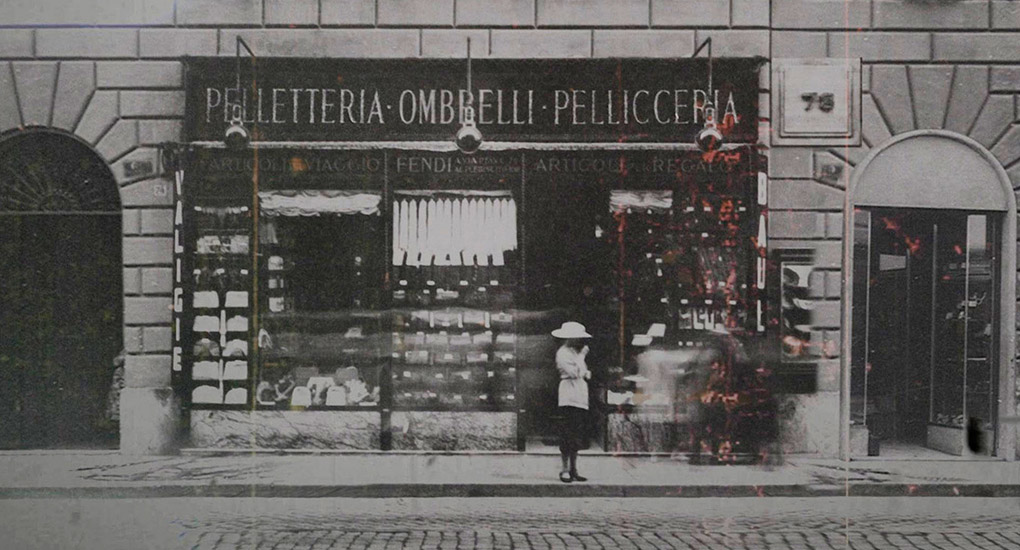
After Edoardo’s death in 1946, the five daughters took over the reins of the business and each one specialized in a specific field: furs, leather goods but also public relations and sales. The goal was to revive the fortunes of the family shop.
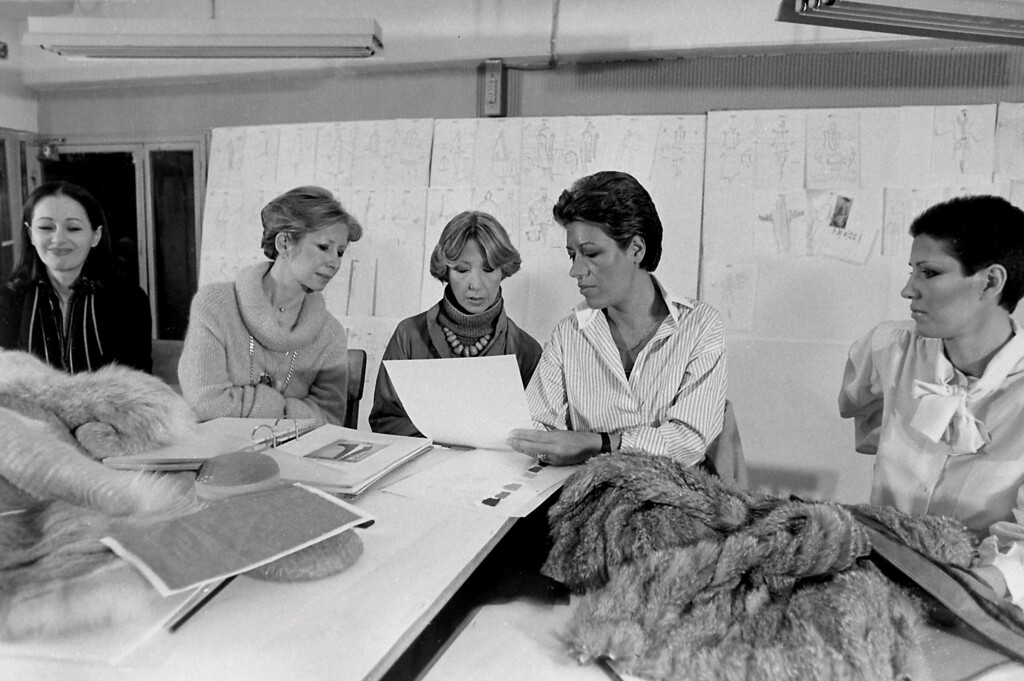
In 1950, at the Grand Hotel in Rome, Fendi presented Amore, the first Capsule Collection of high-end furs and created the X-Ray bag, the first elegant evening clutch bag with a long shoulder strap.
In 1964 the Fendi sisters opened a new boutique with fur atelier in via Borgogna, where they remained for over forty years.
Karl Lagerfeld, Fendi’s creative director
In 1965 the collaboration with the designer Karl Lagerfeld began, renowned for having managed to transform the very concept of fur.
Lagerfeld joined the five Fendi sisters, five like the fingers of one hand, as he himself defined them. The liaison between the sisters and Kaiser Karl was one of the longest lasting fashion partnerships. Thanks to a series of studies on particular leather working techniques, Lagerfeld reinvented a garment traditionally considered pompous, bulky and not always easy to wear.
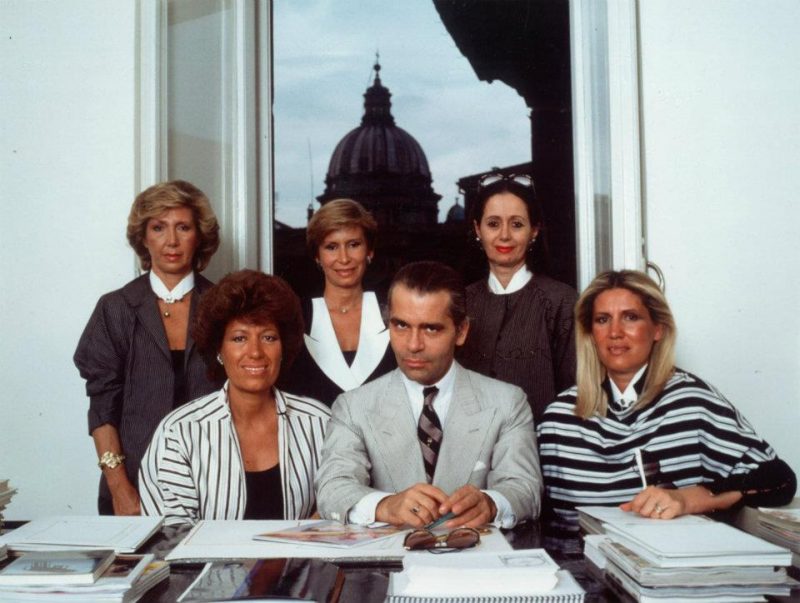
The turning point came in 1977, when Lagerfeld debuted with the first collection of ready-to-wear clothing. In fact, the designer readjusted the brand’s iconic elements, such as fur, for everyday wear.
With Lagerfeld as creative director, the fur is played down and acquires softness, ease, wearability, and becomes “Fun Fur”, a basic product in the brand’s DNA, which still exists today. Based on the “Fun Fur” Lagerfeld created the new FF logo. At the same time, the search for new materials, new treatments, experimental techniques proceeds, hand in hand with the rediscovery and use of forgotten and neglected furs. Lagerfeld created inlaid furs, dyed in different colours, combining and risking, among the first, the shaving and matching of fabrics and leathers with forgotten types of “fur”.
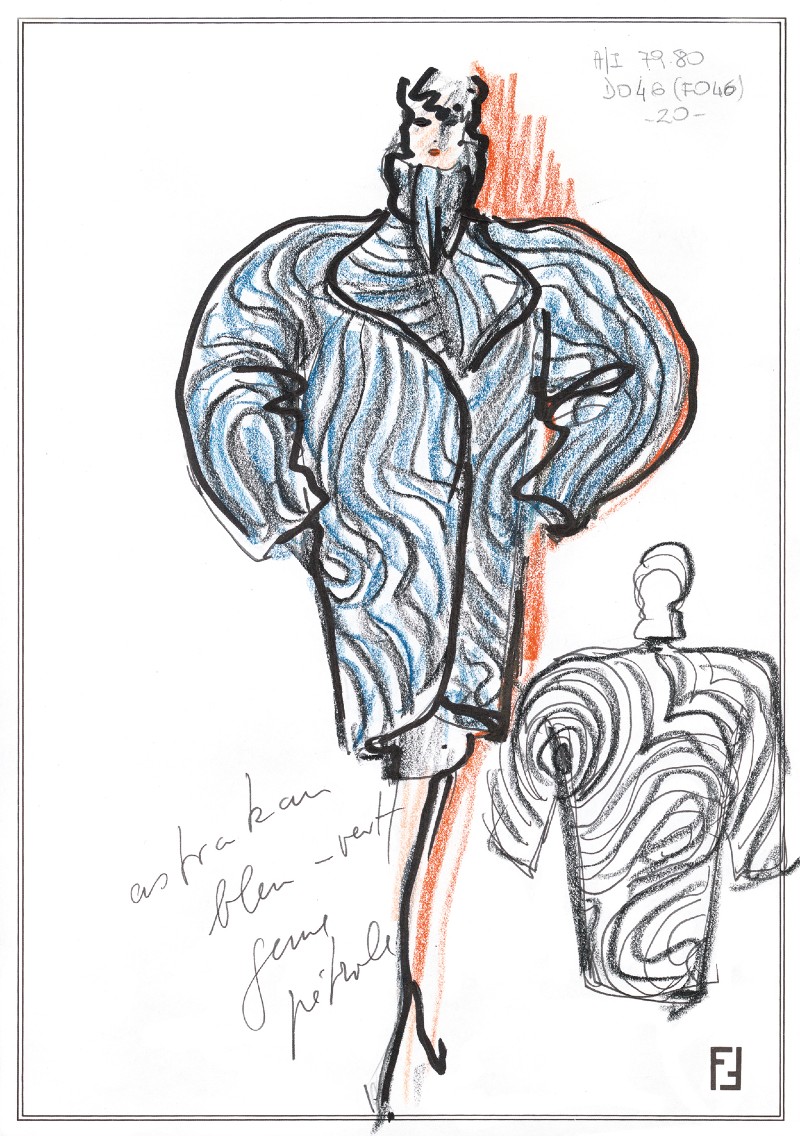
Bags also became more functional. The leather was printed, dyed, woven. The immediately recognizable black and mud double Fs are flanked by the striped and checkers design. The Selleria line was born: a few models and completely handcrafted manufacturing. The FF logo, initially used as a pattern on the inner lining for suitcases, later also became an iconic pattern of the brand.
Fendi’s international consecration took place in 1968, when the leather goods collections attracted the attention of important US retailers, including Bloomingdales. The latter bought the entire collection, dedicating the entire showcase of the store located on Fifth Avenue in New York to it.
The following year it was the turn of the presentation of the first ready to wear fur collection, set up in the Sala Bianca of the Pitti Palace in Florence.
In 1977 Fendi presented the first ready to wear collection of the Maison, through the short film Histoire d’Eau by Jacques de Bascher, considered the first movie in the history of fashion. In the same year Fendi consolidated its bond with the city of Rome, an inexhaustible source of inspiration. The heritage, tradition and deep roots of the capital inspired a style, colours and precious materials, enhanced in the Fall-Winter 1977/1978 fur collection called I Muri e le Strade di Roma.
In 1982 Fendi started a lasting collaboration, still active, with the Sartoria Massoli of Casperia, near Rome. The following year, Lagerfeld and the Fendi sisters created the Pequin motif, a non-logo logo, a black and tobacco striped texture.
1985 marked an important milestone for the Maison: for the first time a museum, the National Gallery of Modern Art in Rome, hosted a fashion house to celebrate Fendi’s twenty-year collaboration with Karl Lagerfeld.
The first Fendi perfume was also launched in 1985, followed by the first Fendi Casa collection in 1987, the year in which Fendi strengthened its bond with the city of Rome through the creation of the symbol inspired by Janus, the Roman god with two faces, one looks to the past and traditions, the other to the future and innovation.
In 1988 Fendi entered the world of luxury watchmaking by launching its own collection of watches and the first perfume for men, preparing its entry, in 1990, into the menswear sector. The first men’s collection was the Autumn-Winter 1990-1991, with a classic yet modern style with great attention to detail.
Always in 1988 Harrods, for the first time in history, dedicated all of its 26 windows to a fashion brand and in 1989 Fendi opened its first boutique in the USA, located on 5th Avenue in New York.
The third generation of Fendi
In the early 90s, the third generation, in the person of Silvia Venturini Fendi, Anna’s daughter, took over the creative direction of accessories and men’s lines. Silvia Venturini Fendi launched the Fendissime line, with furs, sportswear and accessories designed for a younger market.
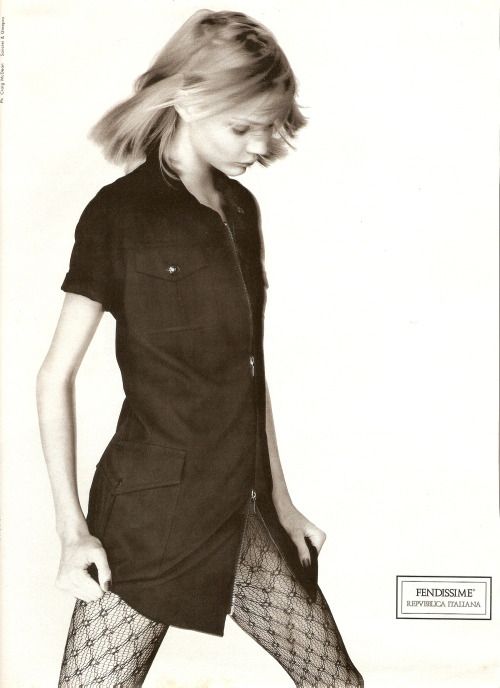
In the meantime, the empire of the five sisters was enriched with many licenses: from knitwear to swimsuits, jeans, umbrellas, watches, eyewear, ceramics, furnishings and household linen. A total of twenty licenses, in addition to fur and leather goods lines.
In this period, about 80% of production was exported. In Italy and abroad there were about a hundred boutiques and about 600 points of sale. The turnover was around 600 billion, which placed Fendi in fourth place in terms of importance among the Italian ready to wear brands.
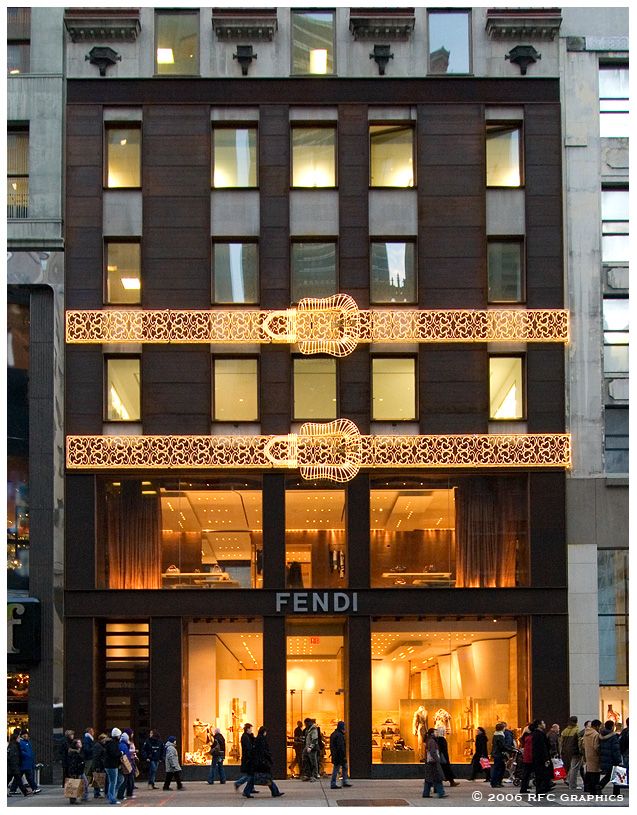
Fendi and the cinema
At the end of the 60s, the long love story between Fendi and the world of cinema began, with the creation of fur coats for both the cinema and the theatre. Among the many movies and productions, the following should be mentioned: Conversation Piece (1974) and The Innocent by Visconti (1976), Lady of the Camelias by Bolognini (1980), La Traviata by Zafferrli (1983), The Berlin Affair by Liliana Cavani (1985), Carmen (1986), The Age of Innocence by Scorsese (1993), Evita by Parker (1996).
In 2017 with Fendi Studios, the exhibition set up in the Palazzo della Civilità Umana in Eur staged a revolutionary journey with which to overturn the perspective of the relationship between fashion and cinema. Gwyneth Paltrow’s mink fur in the role of Margot Tenenbaum in Wes Anderson’s film and Silvana Mangano’s double coat in Conversation Piece were exhibited.
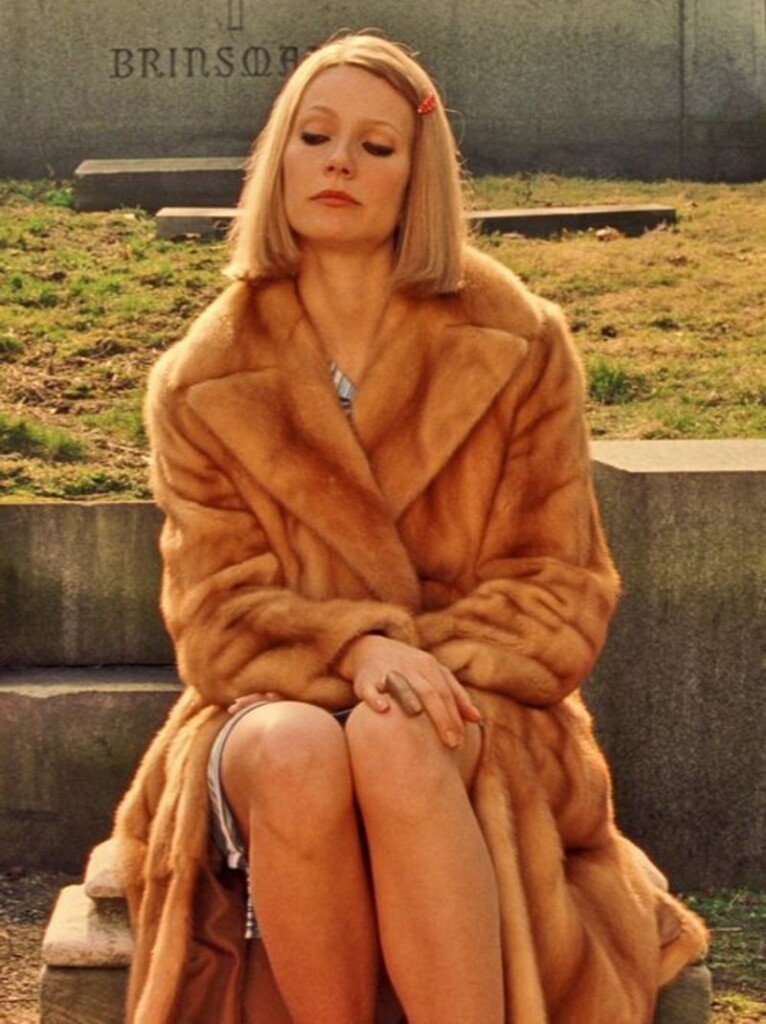
The collaboration with the world of cinema continued. In 2019 the Italian director Luca Guadagnino collaborated with Fendi for the men’s spring summer 2020 collection.
Fendi: The baguette bag
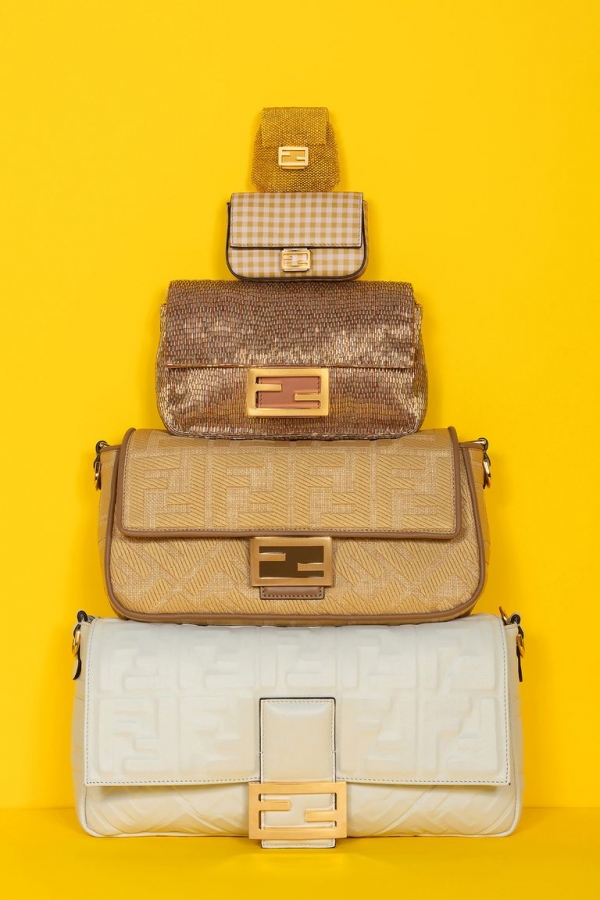
Created in 1997 by Silvia Venturini Fendi, the baguette bag took its name from its particular shape. It recalls the elongated shape of the typical French bread, traditionally carried under the arm. One of the brand’s most iconic bags was born from this image: a very short shoulder strap and an elongated rectangular shape. A revolutionary novelty against the minimal aesthetics of the 90s.
The bag has been loved and worn by many celebrities: Madonna, Naomi Cambpell, Gwyneth Paltrow, Julia Roberts, Anna Dello Russo, Ashley Graham, Winnie Harlow. Sarah Jessica Parker as Carrie Bradshaw in the tv series Sex and the city consolidated its success.
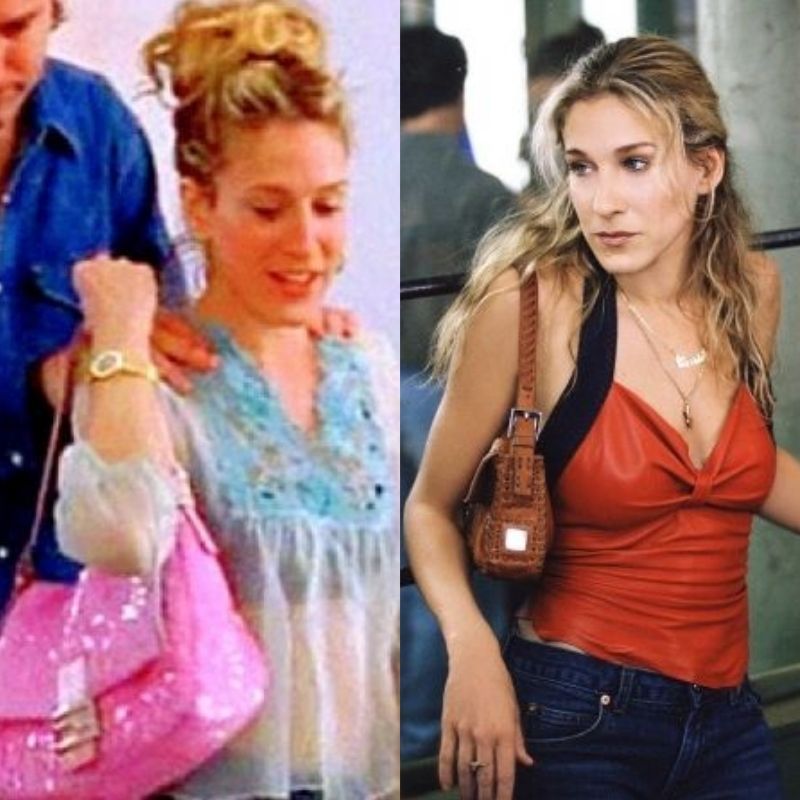
In 2012 Rizzoli published Fendi Baguette, a photographic volume that traces all the models created over time, including those made in limited editions. Over time it was declined in thousands of versions: fur, crocodile, lizard, denim, velvet and pony. With sequins and pearls, embroidered, with fringes or crystals.
LVMH buys Fendi
At the end of 1999, the company was very sought after. After endless rumours of divestments, the Maison came under the control of Prada and Bernard Arnault, owner of LVMH. LVMH, in a joint venture with Prada (Lvp Holding), acquired 51% of the company, but the management remained in the hands of the Fendi family. Later, Prada began to sell its shares to LVMH, which in 2001 became the majority shareholder.
The success
In January 2001, Fendi collaborated in a joint venture with Aoi, the brand’s distributor in Japan for 30 years. The new company, called Fendi Japan K.K, has been on the market since the spring-summer 2001 collection and is 70% controlled by the Fendi group and the remaining 30% by Aoi.
From 2002 to 2007, the Men’s collection was produced by Ma.co. a company from Soragna (Parma). In the same period, the brand launched the made-to-order service for handmade leather goods. This gave customers the opportunity to completely customize their bag: a real luxury.
Fendi continued to promote international cultural events, including the Goddess exhibition at the Metropolitan Museum, at the Costume Institute headquarters. Among the most prestigious events of the New York spring, the exhibition displayed two dresses, donated by the Fendi Archive.
In 2005 Fendi celebrated its 80-year career with the inauguration of Palazzo Fendi in Rome (Palazzo Boncompagni Ludovisi, IIXX century). The new headquarters is now the beating heart of the company.

Since 2008, Fendi has been collaborating with Design Miami/ promoting design and supporting young emerging talents.
Fendi: The Peekaboo bag
The Peekaboo bag was born in 2008 from an idea by Silvia Venturini. The bag takes its name from the exclamation Peekaboo of the hide and seek game. It alludes to a subtle, ironic but gradual form of seduction. It’s a handbag with an unusual opening that recalls door latches. It quickly became a collector’s item, it was made in different sizes (Large, Regular, Mini and Micro) and in exotic materials, in sheepskin, in coloured leather, in Selleria, in nappa leather, with or without woven edges.
In 2015, on the occasion of the opening of a headquarters in London, Fendi asked 9 celebrities to customise the Peekaboo bag. Cara Delevingne, Gwyneth Paltrow, Adele and Georgia May Jagger, Jerry Hall, Zaha Hadid, Katie Adie, Tanya Ling created unique designs. The proceeds were donated entirely to the Kids Company charity, which helps young people to achieve their dreams.
For the bag’s tenth anniversary, the Roman fashion house decided to celebrate the bag with five online short films entitled Me and My Peekaboo, followed by a celebratory campaign with Zoey Tedesco.
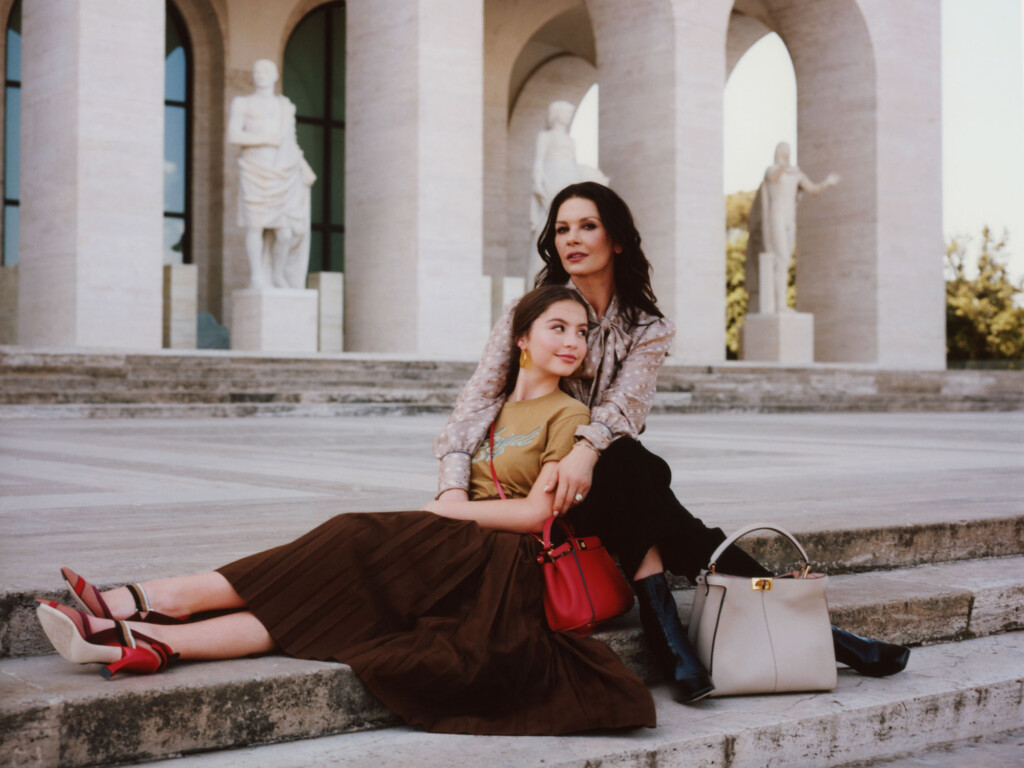
Recent years
In 2010 Fendi launched the kids and Fendi Home line.
The Italian fashion house’s story is made of records. A fashion show event on the Great Wall of China was organized in 2007 with 88 models and special guests and a 1,500-mile catwalk.
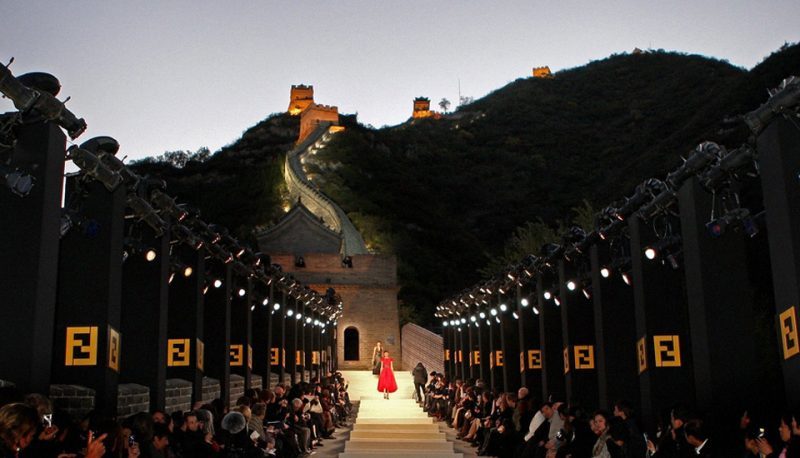
The opening of a new boutique in Paris in 2008, instead, took place with a private concert by Amy Winehouse for only 400 guests.
In 2013 Fendi inaugurated its Milan office in via Solari 35, in the former Arnoldo Pomodoro Foundation, located in a key area for the concentration of artistic and creative activities.
Fendi: Innovations and collaborations
The Italian Maison is always the promoter of new projects and innovations. In 2011 Fendi collaborated with Maserati, in particular on the “GranTurismo Convertible”, thanks to the common values of craftsmanship and tradition. The car was supervised by Silvia Venturini Fendi, and the materials, made to measure and in different colours, were created specifically for that model. The car has an unmistakable double F logo embossed on the seats, in the centre of the Trident symbol on the wheels and in the front.
In 2013 the Maison began the work of restoring the fountains in Rome, according to the Fendi For Fountains project. The work began with the Trevi fountain, followed by the Four Fountains. For Fendi, this meant a deep connection between its identity and that of the city of Rome. Fendi has its roots in Rome, which has always been its muse. The same year Fendi signed a contract with Safilo Group S.p.A. for the production and international distribution of sunglasses and eyeglasses.
The following year, Fendi took another step towards technology by unveiling new, luxurious headphones created in collaboration with Beats by Dr. Dre. Fendi x Beats by Dr. Dre headphones were announced during the Spring/Summer 2015 show in Milan. Also in 2014, the brand collaborated with Zaha Hadid to create a multi-layered leather bag, part of the 3Baguette Project, a collection of creations by famous British women destined for charity.
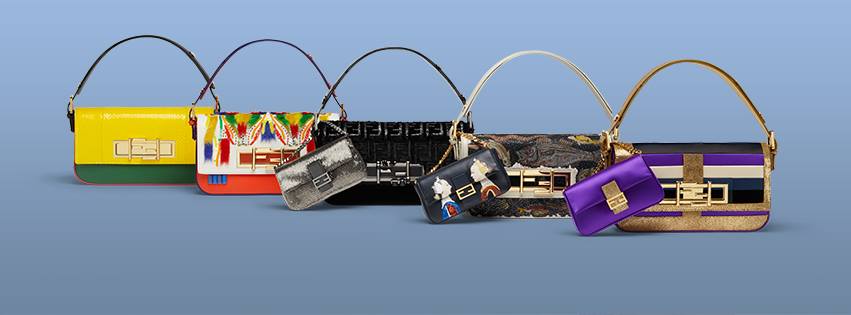
For the first time, on the occasion of the autumn-winter 2014 collection, the Maison used drones to record the fashion shows, to offer an alternative view of the show thanks to the creative use of increasingly advanced technologies.
Always in 2014 Fendi acquired 49% of the shares of the Swiss group Taramax SpA, a company specialized in the production of luxury watches. This action will allow a more important presence of the Fendi group within the watch market.
50 years of collaboration with Lagerfeld
In 2015, with Lagerfeld, Fendi presented the first “Haute Fourrure” collection at the Paris Fashion Week. For the occasion, the fur became a “non-fur”: cut, shredded, coloured, embroidered, it took on a thousand different facets. Sheared mink, a first choice material, dyed in a myriad of colours and used to create sinuous and velvety dresses, with three-dimensional flowers and foliate leathers that recalled lace. On the stage of the Théâtre des Champs-Élysées, the kaiser evoked bucolic and fairy-tale atmospheres. Again, the protagonist was fur. Fendi’s wide range of internationally recognized furs has made the brand stand out from its competitors, as it’s one of the few brands with a complete fur offer.
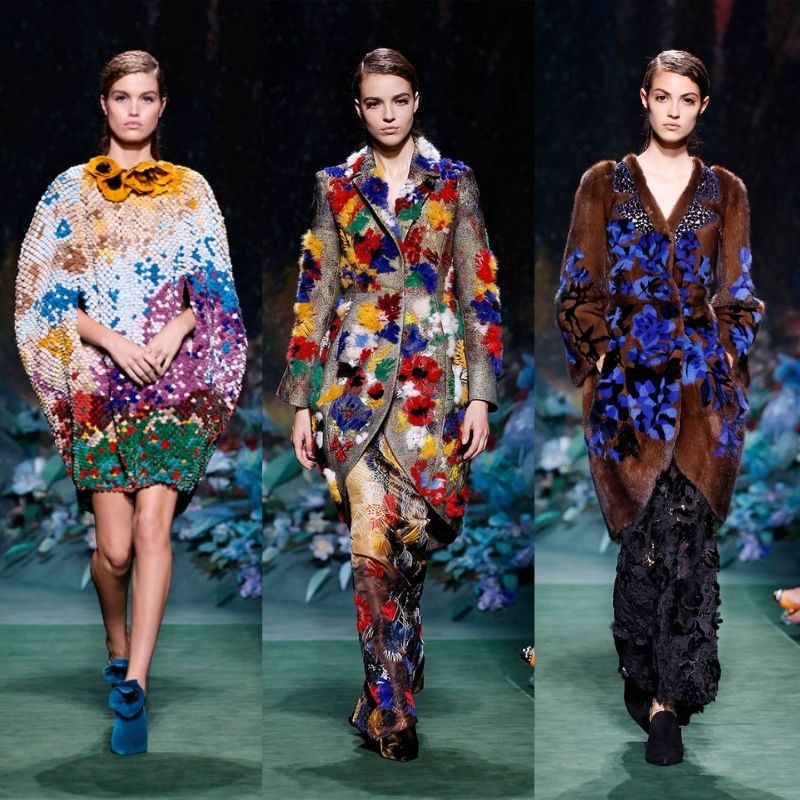
For the fiftieth anniversary, Fendi paid tribute to the designer with the book “Fendi by Karl Lagerferld”. An exclusive story of heritage, creativity and modernity. This was the longest ever relationship between a fashion company and a designer.
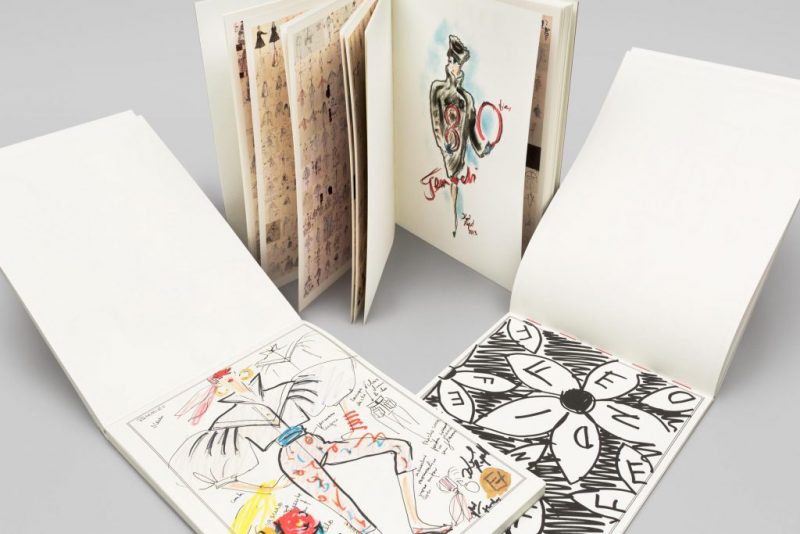
The same year, Fendi moved its headquarters to the Palazzo della Civiltà Italiana, built in 1942 for the EXPO (which, however, was never held). The building now houses a space dedicated to contemporary art exhibitions on the first floor.
In 2016 the renovation and opening of Palazzo Fendi in Rome was completed, between via dei Condotti and Piazza di Spagna. The starred Japanese restaurant Zuma was opened inside. On the 2nd floor, there is the Fendi Privé, a private apartment for celebrities, VIPs and friends of the Maison. The 3rd floor houses the Fendi Private Suites, aka 7 imperial suites.
The 90th anniversary of Fendi
For the 90th anniversary, Fendi organized, on the 7th of July 2016, an A/W 2016-2017 high fashion show at the Trevi Fountain in Rome, the restoration of which was financed by the Roman Maison with the Fendi for Fountains project.
Renamed Legends and Fairy Tales, the collection recreated dreamlike atmospheres by exhibiting the clothes on a transparent catwalk immersed in the blue waters of the fountain. The exhibition “Fendi Roma–Gli Artigiani dei Sogni” also took place, to explain the fur production process and the creative elements.
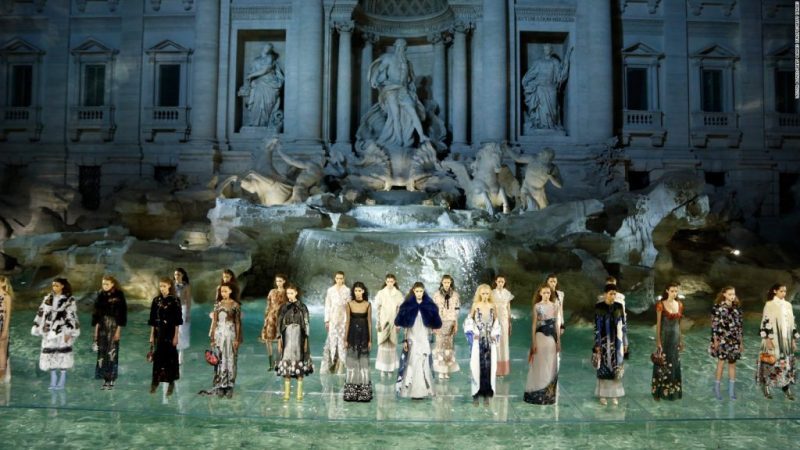
The tribute to Karl Lagerfeld
In 2019, after Karl Lagerfeld’s death, the Roman fashion house paid tribute to the kaiser with The Dawn Of Romanity fashion show at the Temple of Venus in front of the Colosseum. On this occasion 54 looks were exhibited in honour of their years of fruitful collaboration.
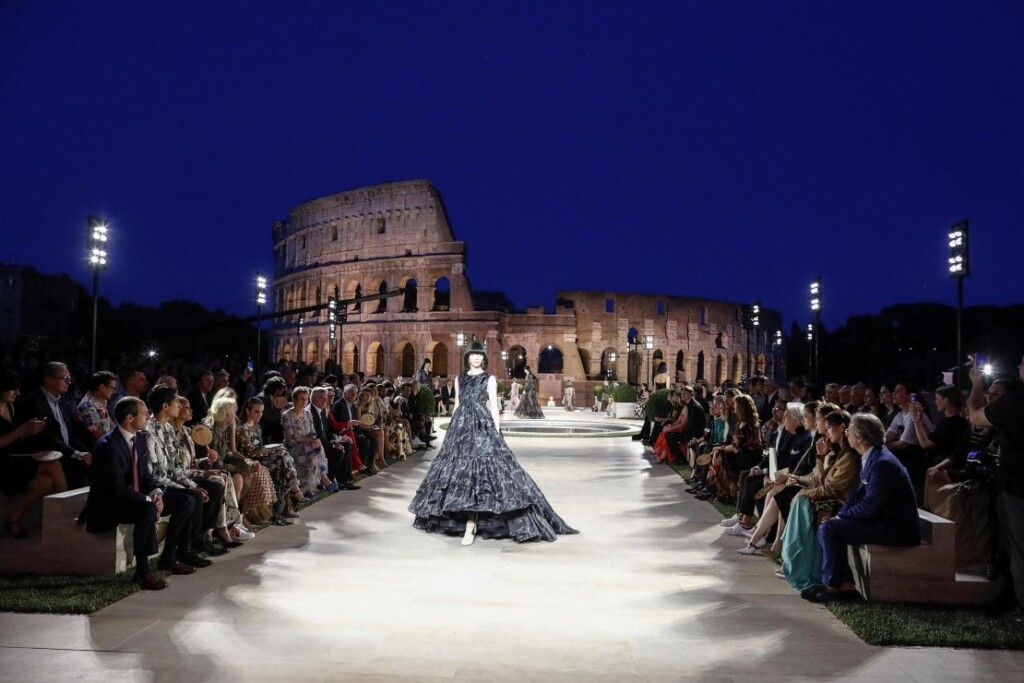
Moreover on the 21st of February 2020 Fendi said farewell to the designer during a Milan Fashion Week show. The show was clearly imbued with references to the kaiser of fashion: the models’ hair tied back, different types of frock coats, large and monumental starched white collars while, on the panel behind the catwalk, there was a sober but elegant “Love, KL”, with typical Lagerfeld writing.
Current situation
The brand’s performance is very high, with a turnover of more than one billion euros. In 2018, the LVMH group announced the appointment of Serge Brunschwig as CEO of the brand. Brunschwig took the place of Pietro Beccari. It’s the only brand that has an internal fur atelier.
Kim Jones’ direction
Since 2020, the women’s collection has been entrusted to Kim Jones, former director of Dior Uomo. Jones debuted with a digital version of Haute Couture show, alongside Silvia Venturini. The fashion show was set in a hall of the Palais Brongniart and the creations were worn by many celebrities loyal to the brand such as Demi Moore, Christy Turlington, Naomi Campbell, Kate Moss and her daughter Lila, Cara Delevingne, Bella Hadid and others. The collection was inspired by Orlando by Virginia Woolf and by the Bloomsbury club. The clothes are sensual while remaining androgynous in their cuts and shapes.
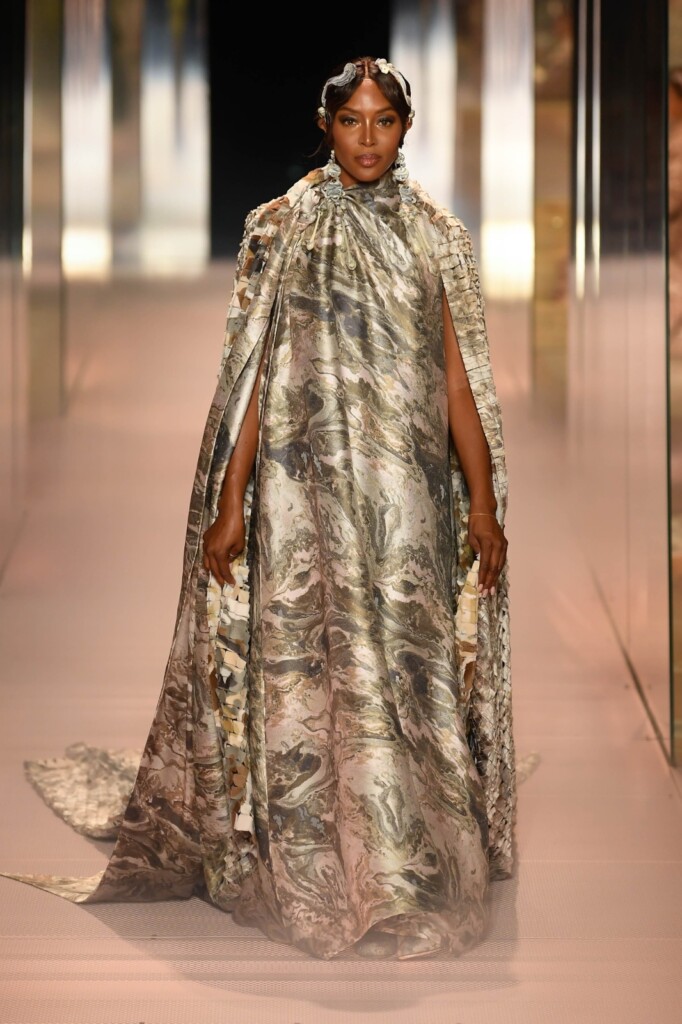
To celebrate the Summer Capsule 2021 ft. FF Vertigo, created with the artist Sarah Coleman, the maison has inaugurated a temporary café until the 7th of June 2021 located on the top floor of the Rinascente in Milan. The entire Fendi Caffè space featured the double F logo.
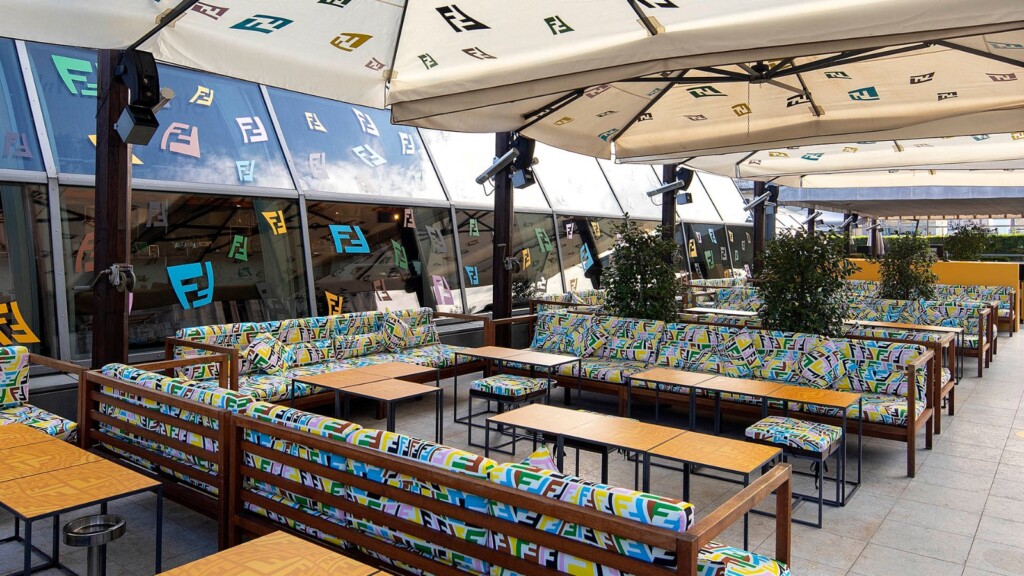
READ ALSO:
